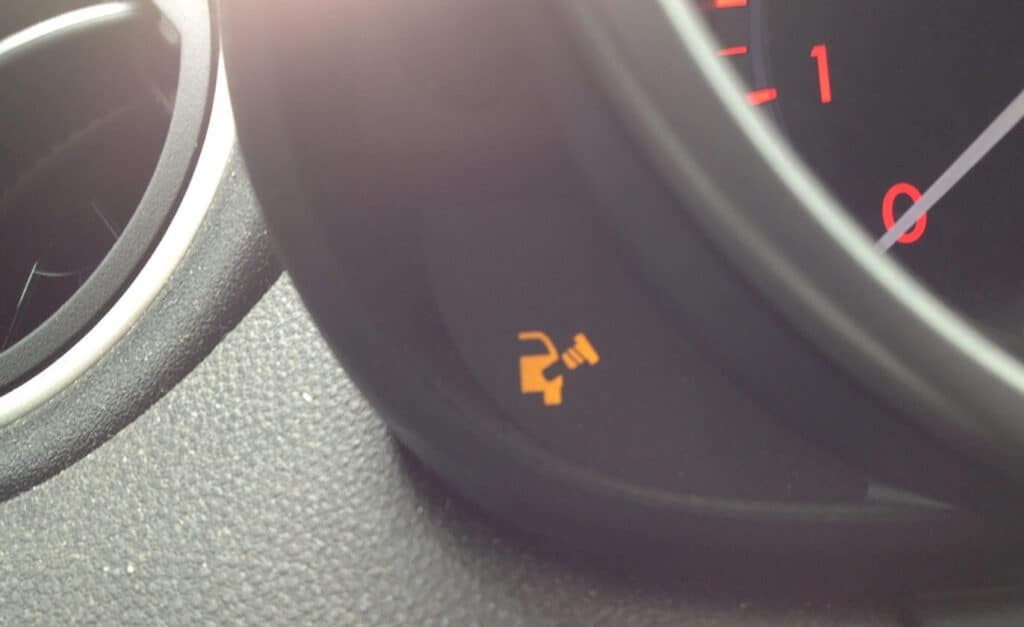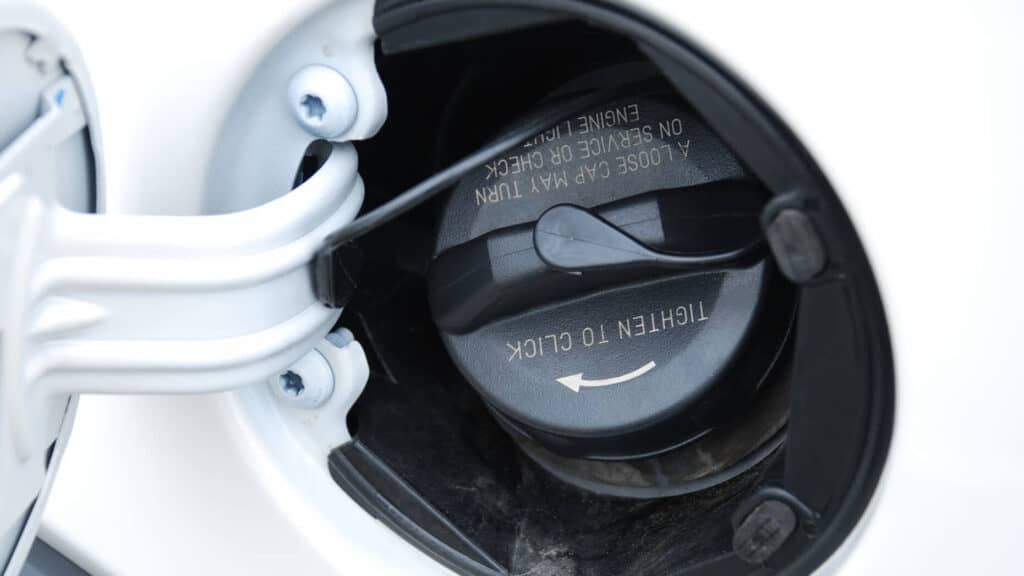Ah, the enigmatic world of car signals and lights. Sometimes, they may make you feel like an archaeologist, unraveling the mysteries of an ancient civilization. But fear not, for today, we will be your guide in decoding the intriguing world of the loose fuel cap warning light. Ready for an adventurous journey through the landscape of automotive technology? Buckle up!
An Unexpected Light: Understanding Why Your Car Keeps Warning About a Loose Fuel Cap
“Why does my car keep saying loose fuel cap?” you may wonder. It’s not your car’s way of nagging you; rather, it’s an intricate system of sensors, vapors, and environmental controls working together to ensure optimal efficiency. Think of it as your car’s way of whispering a friendly reminder about something that could affect its health and the environment. The warning system identifies a lack of pressure in the fuel tank, which could mean vapors are escaping—a scenario that’s neither good for your vehicle nor our planet.
The heart of this mystery lies in the engineering marvel called the Evaporative Emission Control System (EVAP). This system is designed to prevent fuel vapors from escaping into the atmosphere. When you tighten the fuel cap, it creates a sealed environment, ensuring that those vapors are contained. If the cap is loose or damaged, this seal is broken, leading to a loss of pressure. It’s like a garden hose with a small hole in it; the water still flows, but there’s a pesky leak that reduces the efficiency.

Sensors within the EVAP system are the detectives on the lookout for these leaks. When they detect a drop in pressure, they communicate with your car’s computer, triggering the warning light. This is akin to a smoke detector sensing smoke and sounding an alarm; it’s not a sign of imminent doom but a timely warning that something is amiss. The fuel vapors that escape are not only wasteful (as they could have been used for burning) but also harmful to the environment, contributing to pollution and climate change.
Sometimes, the warning may appear because of reasons other than a loose cap, like a damaged seal or a malfunctioning sensor. It’s akin to getting a mild fever; the root cause might be a simple cold or something more serious. Therefore, continually ignoring the warning is not advisable, just as ignoring a fever would be unwise.
On the Road with a Twist: Can You Drive with a Loose Fuel Cap?
Sure, you can still chug along with a loose fuel cap, but it’s akin to leaving your front door slightly ajar. Safety might not be the immediate concern, but it can lead to reduced fuel efficiency and environmental issues. Imagine driving with a little pebble in your shoe; it might not stop you from walking, but it sure can make the journey uncomfortable. It’s like a dripping faucet, seemingly trivial but potentially wasteful. Over time, that drip can add up to a significant loss, just like a loose fuel cap can lead to fuel evaporation.
And don’t ignore the legalities! Depending on local regulations, you might even be breaking the law by driving with a loose cap. It’s not just about the immediate consequences but the long-term impact on your vehicle’s performance and the environment. It might not be a red alert, but it’s an amber one, signaling caution. So, the next time your car warns you about a loose fuel cap, think twice. It might be a small twist, but it can lead to a significant tangle on the road ahead.
Resetting the Mystery: A Guide to Clearing the Check Fuel Cap Warning
It’s not a riddle of the Sphinx but rather a simple process that requires attention to detail. Here’s a friendly guide that even your tech-challenged uncle could follow:
• Tighten the Fuel Cap: Start by making sure the cap is on properly. Twist it until you hear a satisfying click, signaling it’s secure.
• Turn Off the Engine: This will allow your car’s systems to reset and acknowledge any changes, like the tightened cap.
• Restart the Car: Ignite the engine again; this restart helps the car’s system recognize the adjustments made.
• Check the Warning Light: Be patient; it might take a few drives for the light to disappear. The car’s onboard computer will perform checks during these drives.
• Voilà! No Sorcery Involved: If all was done correctly, the light should eventually go off. If not, it may be time to consult a professional.
The Consequences of a Cap Unsealed: What Happens If the Fuel Cap Is Loose?
Picture a slow, sneaky leak in a boat. The immediate consequence might not be a disaster, but over time, it could lead to fuel evaporation, decreased fuel efficiency, and harmful emissions into the atmosphere. Consider it a small act with a big impact, like leaving the refrigerator door slightly open. It might not spoil the food immediately, but it surely will affect its efficiency and your energy bill.
Beyond the personal consequences, there are broader environmental impacts to consider. A loose fuel cap might cause harmful vapors to escape, contributing to air pollution and global warming. Think of it as a tear in a water hose; water still flows, but some will inevitably leak out, wasting resources and potentially causing additional problems. It’s not a catastrophe in isolation, but if everyone ignored their loose fuel cap, the collective effect could be detrimental. So, that little twist in your fuel cap isn’t just about your vehicle’s performance; it’s about being a responsible citizen on the global highway. It’s a small step in the journey, but it can lead to a destination of sustainability and efficiency.
Will It or Won’t It? The Self-Resetting Fuel Cap Light Explained
In many cases the gas cap light will reset itself—after you’ve corrected the issue. It’s like your body healing a small cut; give it time and the right conditions, and all will be well again.
• Understanding the Mechanism: Know that your car’s computer monitors the fuel system. Correcting the issue should initiate the self-reset process.
• Correcting the Issue: Whether it’s tightening the cap or replacing a faulty one, proper correction is key.
• Patiently Waiting: It might take a few drives for the light to reset itself. Think of it as your car’s way of double-checking the problem is indeed fixed.
• When It Doesn’t Reset: Sometimes, the issue might be more complex, and the light won’t reset by itself. This might be a sign to seek professional help.
• Trust the Process: As with healing a cut, your vehicle has built-in mechanisms to restore itself. Trust that with the right measures, all should return to normal. If not, professional guidance is a call away.

A Price Tag on Security: Potential Repairs, Costs, and Trusted Solutions Related to Loose Fuel Cap Warning Light
Various scenarios could trigger this warning, from the straightforward issue of a loose or missing cap to more complex problems like a faulty sensor or seal. These can result from wear and tear, accidental damage, or even manufacturing defects. The variety of causes paints a complex picture of the mechanics of your car’s fuel system, showing that even the seemingly simple warning light is connected to a delicate equilibrium within your vehicle.
The potential costs of addressing the loose fuel cap warning light can vary widely. A new fuel cap might be as low as $5, while more severe issues like sensor replacements could escalate to $100 or even more. This is where a reliable and expert service can make all the difference. With professional guidance, you can navigate these costs efficiently, ensuring that you are not overcharged for unnecessary repairs or, on the flip side, overlooking a potentially significant problem.
Time and Again: Understanding How Long It Takes for the Fuel Cap to Reset and Why
Much like waiting for your favorite dessert to set in the fridge, the resetting of the fuel cap light requires patience. Typically, it takes a few drives for the vehicle’s system to confirm that the issue is resolved. Factors that can affect this timing include the type of car, the nature of the fuel cap issue, and even the way you drive. Understanding these factors can make the waiting game less frustrating and more a matter of routine check-and-balance in the car’s intricate design.
The mechanics of the fuel cap resetting is a fascinating blend of engineering, algorithms, and a dash of mystery. Your vehicle’s onboard computer conducts a series of checks, often over multiple drives, to ensure that the fuel system’s pressure and seals are working perfectly. These checks include verifying that the fuel cap is on tight and that there are no leaks in the system. It’s like a secret conversation between different parts of your car, ensuring that everything is in harmony. Knowing that this process is about more than just a light on your dashboard, but a crucial part of your vehicle’s well-being, can provide peace of mind during those few drives of anticipation.
A Tight Finish: Empowering Your Journey with the Knowledge of Fuel Cap Warnings
So, there we have it—an enlightening journey through the twists and turns of the loose fuel cap warning light. You’ve explored, discovered, and mastered this everyday automotive phenomenon. Ready for the next adventure? Uchaincs, the top mobile mechanic company in Canada, is your go-to destination for any vehicle-related needs. Expertise, trust, and empowerment await you on your automotive road ahead. Book an appointment today!
